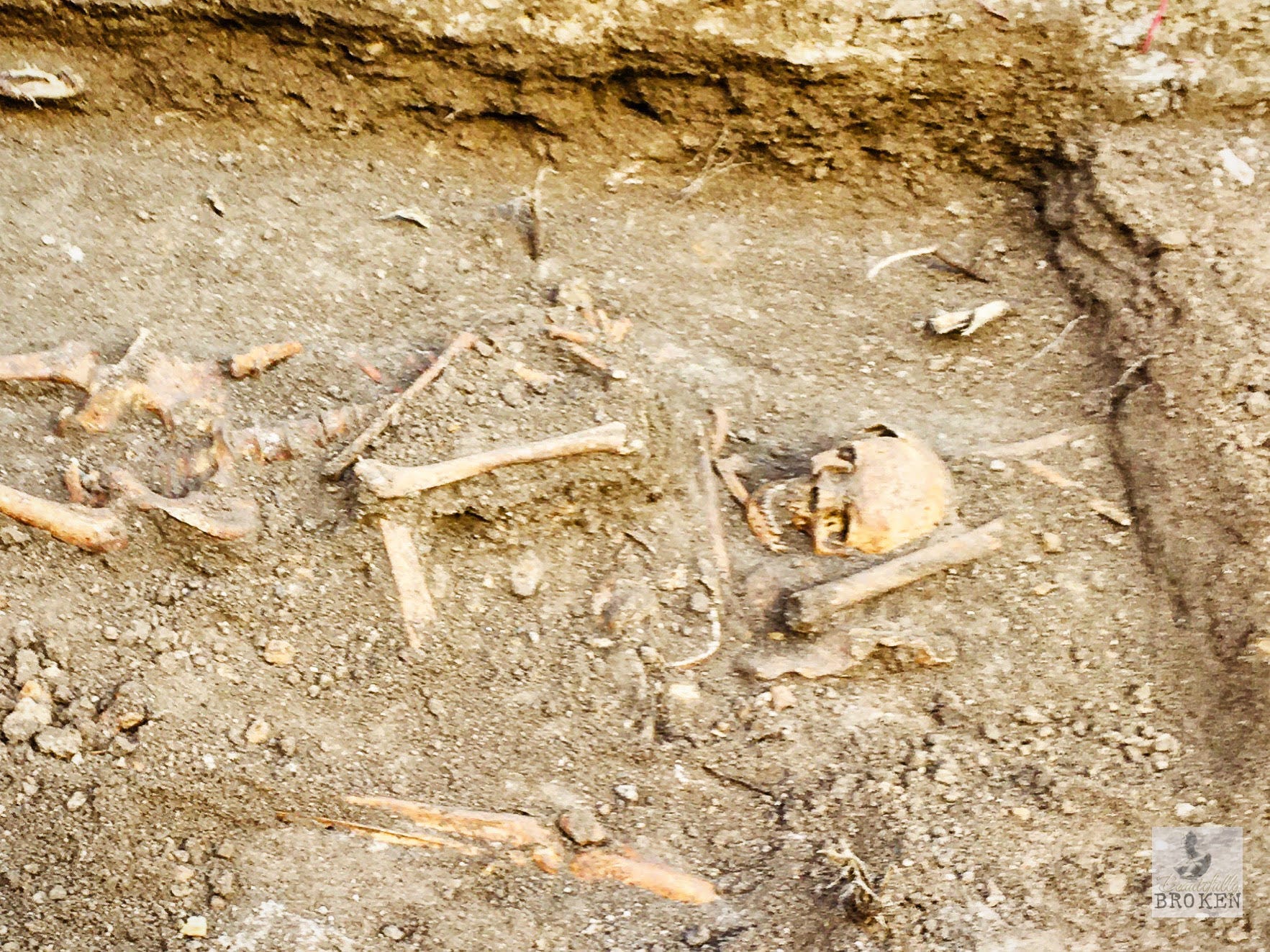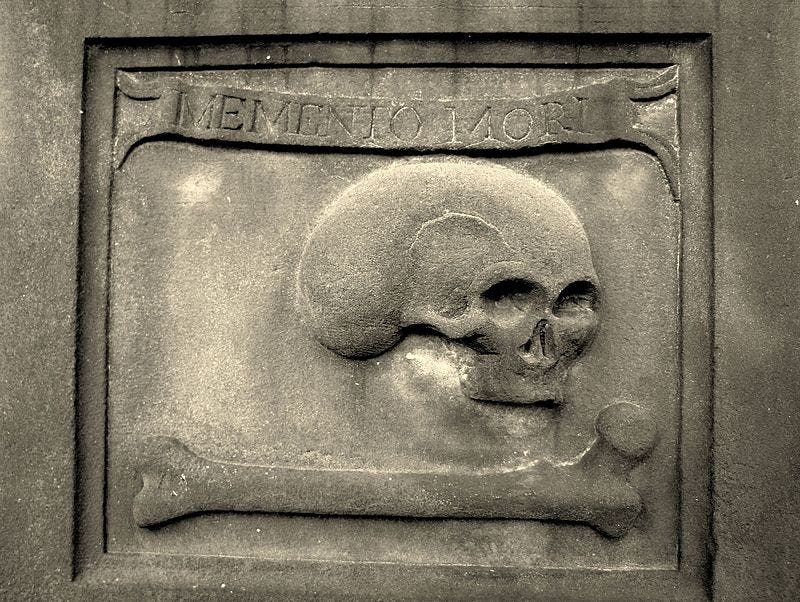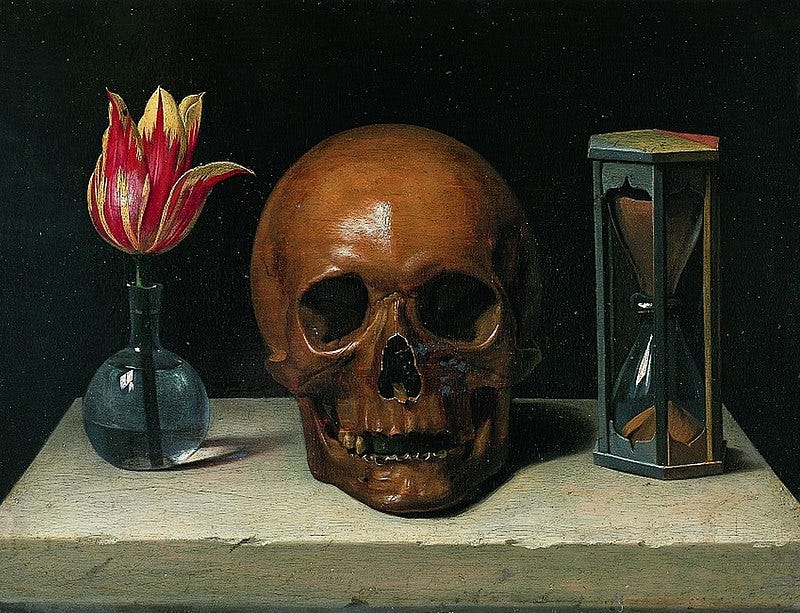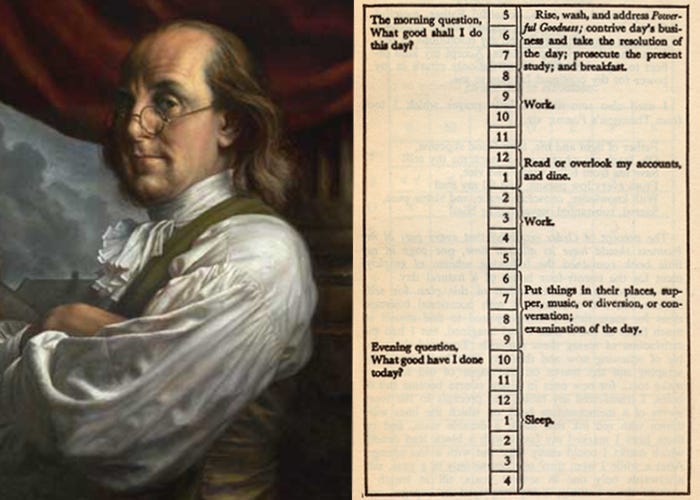Memento Mori, Remember You're Going To Die (with Steve Jobs, Something About Mary & Emily Dickinson).
ENLIGHTENMENT PROMPT #5
REPORTAGE HAIKU
Four score and ten rides
round the sun is what you get -
memento mori.
I was walking the dog alongside the Grasse cathedral path yesterday when I stumbled upon a dead man. Skull with a jawbone full of teeth, pelvis, and who knew the bones at the base of the spine were so thick? No grisly murder scene, an archaeologist was at hand with his brush and shovel, carefully exposing the remains. The archeologist informed me that since the bones were only from the 16th-18th century they were not considered a particularly old or important find. In my home country of Australia where the first European colony was established just over 230 years ago, such a discovery would have been a major news event.
Here was someone who had been buried alongside the cathedral, presumably to help guarantee a place in heaven or at least a proximity that would serve as a kind of booster rocket to lift their soul in an upwards direction if it found itself in hell or purgatory.
I was in two minds about taking the photograph. On one hand, I believe it’s important to respect the dead and, on the other, I realised that what lay before me was a genuine, poignant, memento mori and that a photo of it with some discussion might be of use to you, the reader.
Memento mori (Latin for 'remember that you [have to] die') is an artistic or symbolic trope acting as a reminder of the inevitability of death. The concept has its roots in the philosophers of classical antiquity and Christianity, and appeared in funerary art and architecture from the medieval period onwards. The most common motif is a skull, often accompanied by one or more bones. Often this alone is enough to evoke the trope, but other motifs such as a coffin, hourglass and wilting flowers signify the impermanence of human life.
The themes of Beautifully Broken are personal enlightenment and how we can utilise that experience as a path to world peace. The idea of the memento mori is useful as part of this process but only if it’s approached in the right way (and because this can be a grisly subject for some I've added some humorous content to lighten the mood).
When Steve Jobs, the founder of Apple Computer gave the commencement speech at Stanford University in 2005 he said:
"When I was 17, I read a quote that went something like: "If you live each day as if it was your last, someday you'll most certainly be right." It made an impression on me, and since then, for the past 33 years, I have looked in the mirror every morning and asked myself: "If today were the last day of my life, would I want to do what I am about to do today?" And whenever the answer has been "No" for too many days in a row, I know I need to change something.”
I like the quote, Jobs is using his own reflection in the mirror as a kind of memento mori but because he was a successful entrepreneur and much admired, there is a risk of taking what he said the wrong way and, in heading off course by a degree in the beginning, ending up a thousand miles off course by the end.
Don't Use An Awareness Of Death To Beat Yourself Up
Part of current The American Dream seems to be bound up with the idea of a personal, endless, capital-generating productivity. Productivity has become a booming industry with companies, systems and products in competition with one another. When you have to beat the previous book or course, you have to promise more productivity, more growth, and with less effort. It reminds me of that hilarious scene from the comedy movie Something About Mary* where Ben Stiller nearly becomes the victim of a hitchhiking serial killer for blowing up his dream of being the creator of "7 minute abs” by postulating the possibility that someone else might come up with "6 minute abs”.
So more productivity, more growth, with a great big helping of stress rebranded as "less effort” until presumably, you die from a heart attack. I recently looked at the daily to-do list of Benjamin Franklin, one America's founding fathers in my first Enlightenment Prompt: Divine Suicide For A Happy 2024 (with Basho's Frog). Franklin seems to have settled upon a balanced mix: 8 hours work with a generous 2 hour French-style lunch with reading and later, evening conversation and music. A good portion of the morning is spent planning and in meditation (addressing Powerful Good).
A reasonable, achievable productive schedule for the newly formed democracy in the New World. Not "more, harder, faster". This cannot be the formula for a good life. If we are to seek wisdom in memento mori it must not be as an anxiety-inducing productivity talisman. It’s important to make this clear because beating yourself up with the idea that death is coming might very well be superficially effective. Our bank balance might grow and our business plan accelerate. Psychology teaches us that behaviour we are rewarded for tends to be reinforced and repeated. But starting with these ideas will, in the long run, bring about suffering and move us away from enlightenment.
How can we make death an ally that will help us towards enlightenment instead of perceiving him as an enemy to be feared?
Read on for The Dance of Death, today’s Practical Enlightenment Method…
Practical Enlightenment Method: Emily Dickinson & The Danse Macabre
Keep reading with a 7-day free trial
Subscribe to Beautifully Broken to keep reading this post and get 7 days of free access to the full post archives.






